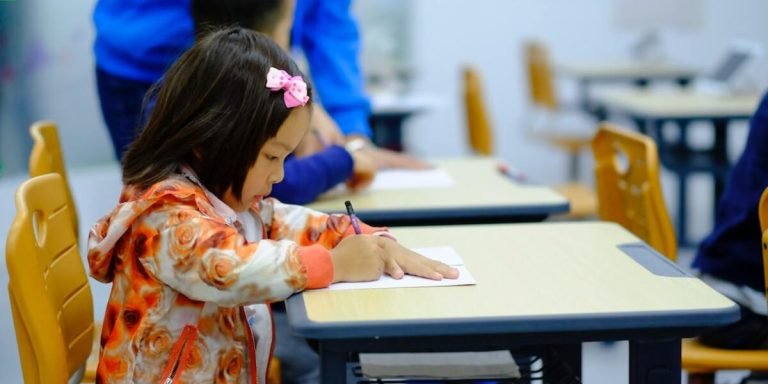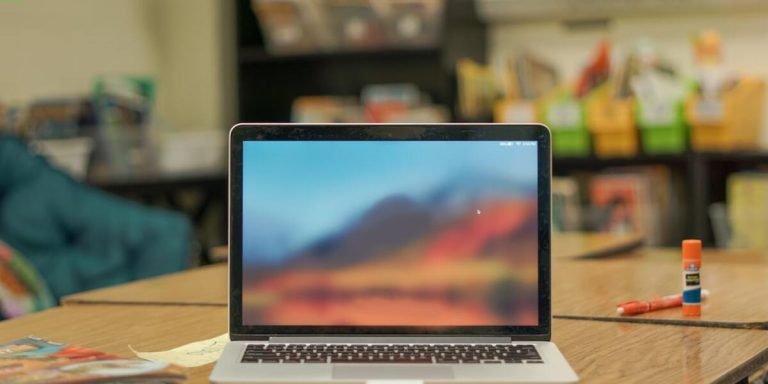Primary Education: The Foundation of a Child’s Learning Journey
Understanding the significance of ‘primary education’ in a child’s life is crucial for parents and educators. This stage forms the bedrock on which all future learning is built, shaping children into responsible adults. Primary education isn’t simply about imparting knowledge; it encompasses developing social skills, fostering curiosity and creativity, instilling moral values, teaching discipline – preparing young minds for their lifelong academic voyage.
This formative phase – elementary school years are instrumental not only academically but also play a pivotal role in molding a child’s personality traits. The early exposure to varied subjects helps identify individual interests leading to improved concentration levels over time as they navigate through this new world of schooling with excitement mixed fear at times due lack experience familiarity that gradually seeps.
Did you know?
Did you know that it’s in the primary education years (ages 5-9) that children develop their cognitive skills most rapidly, and this flexible thinking ability forms the foundation for learning all future complex subjects? This insight is from research published in Cognitive Psychology journal.
Understanding the Core Curriculum in Primary Education
Understanding the core curriculum in primary education requires a broadened perspective of what constitutes effective learning for children. Primary education, also known as elementary school, serves as an essential foundation where youngsters acquire basic knowledge and skills that shape their future educational pursuits.
The core curriculum in primary education typically encompasses Mathematics, English Language Arts (ELA), Science, and Social studies – integral elements designed to foster intellectual growth among young learners. The aim extends beyond mere content delivery to nurturing critical thinking abilities and problem-solving aptitudes within students.
In 2023’s educational landscape, there is a heightened emphasis on integrating technology into these areas of study. This tech-savvy approach not only ensures pupils are equipped with digital literacy skills but further facilitates interactive learning environments which resonates better with today’s generation z kids.
Mathematics sharpens numerical competency while ELA accelerates communication proficiency through reading comprehension procedures alongside writing exercises. Meanwhile science introduces empirical facts about the world we inhabit assisting children understand natural phenomena whereas social studies enlighten them regarding societal operations including history and geography excerpts.
Indeed comprehending the components within this dynamic mixture helps parents reinforce relevant academic aspects at home thereby aiding youngster’s seamless progression throughout their early schooling years—hence understanding how crucial it is to acknowledge the value held by primary or elementary school core curricula truly means unlocking your child’s full potential during pivotal initial stages of formalized instruction.
The Importance of Literacy and Numeracy Fundamentals
Primary education is a crucial period in a child’s learning journey. It essentially lays the foundation for their overall development and shapes their future educational experience. The core area to focus on at this stage includes literacy and numeracy fundamentals, crucial building blocks that impact every aspect of life.
Learning how to read and write effectively are paramount skill sets underpinned by literacy. In primary education, kids facilitate independent thought through these skills while also nurturing creativity. As they explore literature from various genres, children learn about different cultures, historical events or scientific facts broadening their knowledge base significantly further than what textbooks alone can provide.
Moreover, fine-tuning reading abilities helps them articulate thoughts clearly both orally and in writing- an important communication tool fuelling successful interactions throughout life.
Next up: numeracy – another cornerstone providing practical real-life benefits like budgeting personal finances or calculating change during shopping trips apart from being integral across many career domains such as engineering or finance related sectors requiring strong mathematical proficiency levels etcetera!
A school curriculum that focuses on establishing a firm grounding in basic arithmetic operations, such as addition, subtraction, multiplication, and division, enables learners to tackle more complex concepts with ease at later stages. Equipping them with the ability to think logically and confidently apply learned techniques to solve problems in any situation thrown their way enhances their decision-making capabilities. This underscores the importance of acquiring a good grasp of math skills during childhood. Indeed…
Incorporating Science and Social Studies in Early Learning
Understanding the core curriculum in primary education involves more than just mathematics and language arts. While these subjects form a significant part of early learning, we mustn’t overlook two other major components: science and social studies. As educators or parents who assist with home-tutoring, it is imperative that you incorporate both fields into your child’s daily learning schedule.
Science forms an integral role in our everyday lives; therefore its importance can never be overemphasized even at the level of primary education. It instills curiosity, encourages exploration as well as experimentation making children question their surroundings and seek answers to phenomena around them. There are many fun ways to educate kids about various scientific concepts like engaging hands-on experiments, interesting video content or age-appropriate books on natural sciences.
Beyond book-bound knowledge, science teaches youngsters problem-solving skills through observation-based activities such as growing plants from seeds or monitoring local weather changes – practical exercises they could carry out within their environment.
Social Studies too plays substantial roles in the holistic development of children during this important stage of elementary school education known commonly as “primary”. By introducing students to different cultures around the world via history lessons provides context for understanding present-day global events while equipping them with insights needed for interacting effectively within increasingly diverse societies today.
The Role of Technology in Enhancing Elementary School Learning
The contours of primary education have significantly evolved over the years, with technology playing an increasingly influential role. In today’s digital era, it is pivotal to incorporate technological advancements within elementary school learning environments to make them more interactive and engaging for our young learners.
Indeed, incorporating tech tools such as laptops, tablets or smartboards not only makes classwork exciting but also renders teaching easier by centralizing resources in one place. It bolsters project-based learning and collaborative activities among peers which are paramount for their social skill development – essential aspects of 21st-century skills.
Moreover, technology-based assessment mechanisms provide real-time feedback on students’ performances enabling teachers to customize lesson plans according to individual needs; thus ensuring no child gets left behind in this dynamic landscape. The beauty lies in how these electronic devices simplify lessons into fun-filled games maintaining student interest while lowering dropout rates; thereby redefining traditional pedagogical methods that characterize fundamental stages of primary education.
In conclusion, ingenious integration of modern-day gadgets stands at the forefront transforming theoretical knowledge into practical exploration concomitant with strengthening cognitive abilities among children. This combination increases overall comprehension levels leading us towards a brighter future brimming with innovative leaders instilled through progressive early childhood educational practices infused with cutting-edge technologies.
Interactive Tools for Engaging Young Students
Primary education has significantly evolved with the advent of technology, playing a critical role in enhancing elementary school learning. Among these advancements, one area stands out – interactive tools that can highly engage young students.
Interactive technologies provide an innovative and exciting platform for imparting knowledge to children. With simulation games and virtual reality setups incorporated into lessons, kids not only learn but also have fun doing so in 2023! They allow educators to create immersive experiences that enhance understanding while building on their curiosity.
Consider coding – once seen as a complex subject best left until high school or college is now being introduced during primary education thanks to user-friendly platforms like Scratch Jr. Such tools encourage problem-solving skills among youngsters at a very early age by putting them through fun puzzles which they need to solve using block programming commands.
Digital storytelling is another excellent example where technology reshapes how we teach. Rather than passive consumption of stories from books or videos, apps such as Storybird let pupils be the authors themselves! Not just limited to writing text-based narratives; they are encouraged further by integrating visuals including images and animations helping stimulate creativity complemented by language development!
Engaging quizzes via online applications such as Kahoot!, Quizizz makes testing more enjoyable for younger ones! These platforms gamify quizzing sessions transforming typically mundane assessments into stimulating activities boosting engagement multi-fold compared before &ndash keeping boredom miles away even when tackling challenging subjects!
E-Learning Platforms Tailored for Primary Education Environments
E-Learning platforms have evolved to be a game-changer in today’s world. They’re now crucial components of primary education environments globally. As technology continues to permeate every aspect of our lives, the field of elementary school learning is not left out.
Optimized e-learning tools grant students access to an engaging digital environment where they can interact directly with educational materials tailored for their needs and abilities. These technological advancements provide opportunities for more personalized instructions that cater specifically to each child’s unique learning style.
A significant benefit about these digital systems is that they are accessible anytime from anywhere providing continuity in schooling even amidst disruptions such as pandemics or natural disasters while also being cost-effective compared to traditional classroom resources.
Supporting Diverse Learners in the Elementary Classroom
Supporting diverse learners in the elementary classroom, especially in today’s dynamic educational landscape, is a paramount focal point for primary education. As we advance further into 2023, embracing diversity within our classrooms grows increasingly important and rightfully so. Diverse learning environments foster rich cultural exchange while promoting individuality – sparking creativity and broadening perspectives among students.
To effectively support this vibrant mosaic of young minds, it hinges heavily on understanding each child as an individual first before their role as a student. This approach not only enhances the teacher-student relationship but also paves the way towards tailoring teaching methods to match different learning styles singularly; ensuring optimal comprehension and retention of knowledge.
Moreover, harnessing digital tools available can enhance this personalized experience – many edtech solutions have emerged with features specifically designed to cater to varied abilities and needs prevalent amidst younger crowds. These come along at such a pivotal time slot when modern society continues to integrate technology deeper into everyday activities including education.
Strategies for Inclusive Education at the Primary Level
In the ever-evolving landscape of primary education, inclusivity has emerged as a core principle. It’s all about making sure that no child feels left out or unsupported in their elementary school journey – and it requires both thoughtful strategies and consistent effort.
The first step towards fostering an inclusive environment is embracing diversity. Recognizing and appreciating different cultures, backgrounds, abilities, learning styles can kindle empathy among students while promoting mutual respect. Encourage your class to celebrate individuality—this will not only boost confidence but also facilitate understanding between mixed groups within a classroom setting.
Adopting flexible teaching methods plays another essential role in supporting diverse learners at this level as well. For example employing visual aids for those who are more visually inclined or using songs/rhymes for auditory learners could aid comprehension significantly.
Another proven strategy involves peer mentoring programs where children assist each other with assignments under controlled conditions enhances bonding while multiplying engagement opportunities across levels of ability.
Addressing Different Learning Styles Within Primary Pedagogy
Recognizing and addressing different learning styles within primary education is a key component to effectively supporting diverse learners in the elementary classroom. In today’s dynamic educational landscape, understanding how children learn best helps educators tailor their teaching strategies for maximizing student potential.
Each child has unique ways of receiving and processing information. Some students are visual learners that grasp concepts better when they can see them. Others are auditory or kinesthetic learners who prefer listening or engaging in physical activities respectively.
Firstly, as an educator, it’s crucial to identify these individual learning predilections early on during primary pedagogy years. Diverse diagnostic tools such as quizzes, interactive assignments can help achieve this goal easily.
Also important is involving parents into this distinctive approach towards their respective offspring’s study process; regular communication about what works well at home versus school setting fosters stronger parent-teacher partnership which consequently leads towards improved student outcomes .
Conclusion
In essence, primary education undeniably plays a pivotal role in shaping the intellectual growth of our young ones. It equips them with basic literacy and numeracy skills while fostering social maturity and emotional intelligence that form the bedrock for their scholastic journey ahead. Remember, every child’s learning odyssey is unique – as distinctive as the stars in the night sky.
So take a moment to further delve into our wealth of resources designed specifically to assist you through this enlightening path called childhood education. Whether you’re an educator seeking innovative teaching techniques or a parent desiring support on nurturing your budding scholar, we’ve got it covered! Discover more tips and insights about navigating primary education today; because at every twist and turn of this exciting educational voyage, we are here alongside you…every step of the way!







